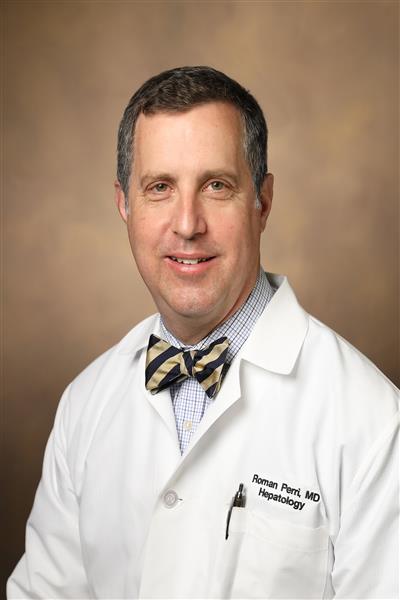From a dire infection, to becoming a nurse
When Erin Morris was 17, she was diagnosed with autoimmune hepatitis, a disease in which the body’s own immune system attacks the liver. It can lead to cirrhosis and liver failure.
Morris, now an adult, admits that as a teen she was not always the best patient. That changed, however, after Roman Perri, M.D., assistant professor of the Division of Gastroenterology, Hepatology and Nutrition at Vanderbilt University Medical Center took on her case. Perri says Morris’ perseverance was an inspiration.
“She is just one of those patients who really turned it all around,” Perri said. “She exceeded our expectations on so many levels. She truly inspires us.”
Liver Transplant
A series of infections
Morris, of Decherd, Tenn., was a Vanderbilt patient during much of her junior and senior years in high school. After graduating from high school, she began working as a certified nurse assistant. She met her future husband and they had a son.
It wasn’t until Corbin was born that her health began to falter again.
“I was just fine during the pregnancy,” recalled Morris. “But it all went downhill afterwards. I was in and out of the hospital for various infections and things.” She needed a liver transplant.
“By the time we got the call that a liver was available,” Morris said, “I was very, very, very sick.”
"She is someone we admire a lot for making it through some really, really tough conditions.”
She ended up with a serious infection. Morris cleaned her yard after a bonfire. Doctors suspect that the hay bales scattered around the fire pit contained mold, which Morris inhaled, causing Aspergillosis, an infection caused by Aspergillus, a common mold (a type of fungus) that lives indoors and outdoors. The fungal infection spread from her lungs to her eyes and brain.
“Traditionally, the mortality rate is 100 percent in patients being transplanted who have this type of infection,” Perri said. “She was critically ill and on the verge of dying when a liver became available to her.
“It’s amazing how she pulled herself through it all and just kept moving forward. She is someone we admire a lot for making it through some really, really tough conditions.”
A career after a liver transplant
After surviving the liver transplant, Morris decided to enroll in school to earn her Licensed Practical Nursing degree. She said her time at Vanderbilt influenced her career choice.
“I always wanted to do something in the medical field, but my illness stopped me before,” Morris said. “As a matter of fact, I almost missed my chance. Just three weeks into the program I was hospitalized with a bout of rejection. I didn’t let that interfere. I took tests and did my work from my hospital bed.”
Her own medical ups and downs were a whirlwind.
“I definitely could not have done it without God; my husband, Allen; and a great support system,” Morris said. “I know Dr. Perri has been on my side the entire time. He has been a big advocate.”
Liver Transplant
Roman E. PerriMD
- Gastroenterology, Gastroenterology, Hepatology and Nutrition, Hepatology and Liver Diseases, Liver Transplant
